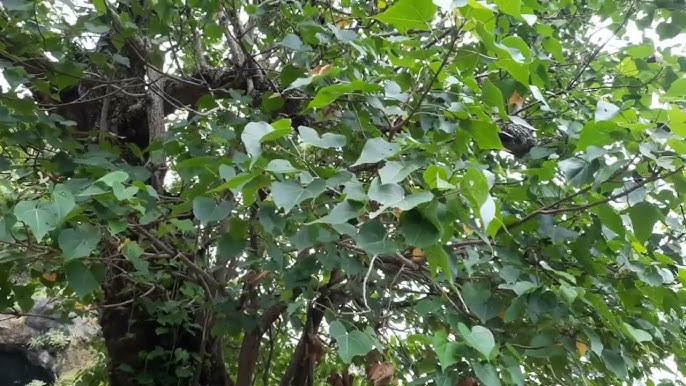

The Paras Pipal Tree, scientifically known as Thespesia populnea, is a remarkable plant with deep cultural, medicinal, and ecological significance. Often referred to as the Indian Tulip Tree or Portia Tree, it has been celebrated for centuries f Read more
Trending
Trees for Corporates
Paras Pipal Tree: Sacred Shade, Medicinal Properties, and Environmenta
You may also like
Corporate Plantations
Paras Pipal Tree Benefits
The Paras Pipal tree is a sacred and ecological wonder, offering medicinal properties, spiritual significance, and environmental perks. It’s the tree that heals, inspires, and sustains all in one leafy package.
Sacred Importance of Paras Pipal Tree
Revered in many cultures, the Paras Pipal tree symbolizes wisdom, growth, and divinity. It’s more than a tree—it’s a spiritual icon rooted in tradition.
Medicinal Uses of Paras Pipal Tree
From its bark to its leaves, the Paras Pipal tree is a natural pharmacy. It’s used to treat fevers, asthma, and skin conditions, proving its role as a healer.
Paras Pipal Tree in Ayurveda
A staple in Ayurvedic medicine, the Paras Pipal tree is known for balancing doshas, detoxifying the body, and promoting longevity. It’s like a wellness guru with branches.
Growing Paras Pipal Trees
Paras Pipal trees are hardy and easy to grow. Plant them in well-drained soil, give them ample sunlight, and watch them thrive as majestic additions to your landscape.
Paras Pipal Tree for Air Purification
The Paras Pipal tree works overtime to absorb pollutants and release oxygen. It’s the botanical air purifier that keeps your surroundings fresh and breathable.
Paras Pipal Tree for Shade
With its sprawling canopy, the Paras Pipal tree offers cool, refreshing shade. It’s the natural shelter that transforms your space into a tranquil oasis.
Paras Pipal Tree and Biodiversity
A haven for birds, insects, and small animals, the Paras Pipal tree is an ecological hub. It’s the go-to hangout for nature’s little critters.
Paras Pipal Tree in Landscaping
Its striking presence and shade-making prowess make the Paras Pipal tree a favorite for parks, gardens, and large landscapes. It’s the showstopper your outdoor space needs.
Paras Pipal Tree Bark Uses
The bark of the Paras Pipal tree is packed with medicinal properties. Used in teas, powders, and poultices, it’s a natural remedy for a range of ailments.
Paras Pipal Tree Leaves
These heart-shaped wonders are not just beautiful—they’re also used in traditional medicine to treat respiratory issues and digestive problems. Aesthetic and functional, all in one.
Environmental Benefits of Paras Pipal Tree
The Paras Pipal tree combats climate change by sequestering carbon, enriching soil, and supporting biodiversity. It’s a green warrior working for a healthier planet.
FAQ
What is the Paras Pipal tree and why is it sacred?
The Paras Pipal tree is revered for its spiritual and ecological importance. It symbolizes wisdom and growth in many cultures, making it a sacred icon that also supports the environment.
How can I grow a Paras Pipal tree at home?
Growing a Paras Pipal tree is simple. Plant it in well-drained soil with ample sunlight, and let it flourish into a majestic, shade-giving wonder.
What are the medicinal uses of the Paras Pipal tree?
The Paras Pipal tree offers natural remedies for fevers, asthma, and skin conditions. Its bark, leaves, and roots are a treasure trove of healing properties.
How does the Paras Pipal tree purify air?
The Paras Pipal tree absorbs carbon dioxide and pollutants while releasing oxygen. It’s like having a natural air purifier right in your backyard.
Can the Paras Pipal tree provide shade?
Yes! The Paras Pipal tree’s expansive canopy makes it an ideal source of cool, refreshing shade, perfect for parks, gardens, or lounging on hot days.
What is the role of the Paras Pipal tree in biodiversity?
The Paras Pipal tree supports birds, insects, and small animals, creating a thriving ecosystem. It’s nature’s way of saying, “Welcome to the neighborhood.”
What is the importance of the Paras Pipal tree in Ayurveda?
In Ayurveda, the Paras Pipal tree is a go-to remedy for balancing doshas, detoxifying the body, and promoting longevity. It’s a natural healer rooted in tradition.
What are the uses of Paras Pipal tree bark?
The bark of the Paras Pipal tree is used in teas, powders, and poultices to treat ailments like fevers and skin irritations. It’s nature’s medicinal toolbox.
How do the leaves of the Paras Pipal tree benefit health?
Paras Pipal leaves are used in traditional medicine for respiratory and digestive issues. These heart-shaped leaves are more than just pretty—they’re packed with health benefits.
Can the Paras Pipal tree combat climate change?
Absolutely! The Paras Pipal tree sequesters carbon, enriches soil, and supports biodiversity, making it a green warrior against climate change.
Why is the Paras Pipal tree significant in landscaping?
With its striking presence and shade-providing capabilities, the Paras Pipal tree adds aesthetic and functional value to parks, gardens, and large landscapes.
What is the environmental importance of the Paras Pipal tree?
The Paras Pipal tree enhances air quality, combats climate change, and supports ecosystems. It’s the tree that works overtime for a healthier planet.
?
?
?
Most Popular
Connect with us
-
👥 Corporates
If you are looking for:
- 🌲 Tree Plantation Events
- 📊 CSR Projects
📧 corporate@growbilliontrees.com
📞 +91 9699723523
💬 +91 9325931304 WhatsApp (Only)
🕒 Mon - Sat | 10am - 7pm IST
-
🧩 Tree Plantation NGOs
If you are looking for:
- 💰 Financial Assistance
- 🤝 Operational Support
📧 support@growbilliontrees.com
📞 +91 9699723523
💬 +91 9325931304 WhatsApp (Only)
🕒 Mon - Sat | 10am - 7pm IST
-
🌼 Individuals
If you are looking for:
- 👥 Group Tree Plantation Drive
- 🌳 Bulk Tree Plantation
📞 +91 9699723523
💬 +91 9325931304 WhatsApp (Only)
🕒 Mon - Sat | 10am - 7pm IST





















